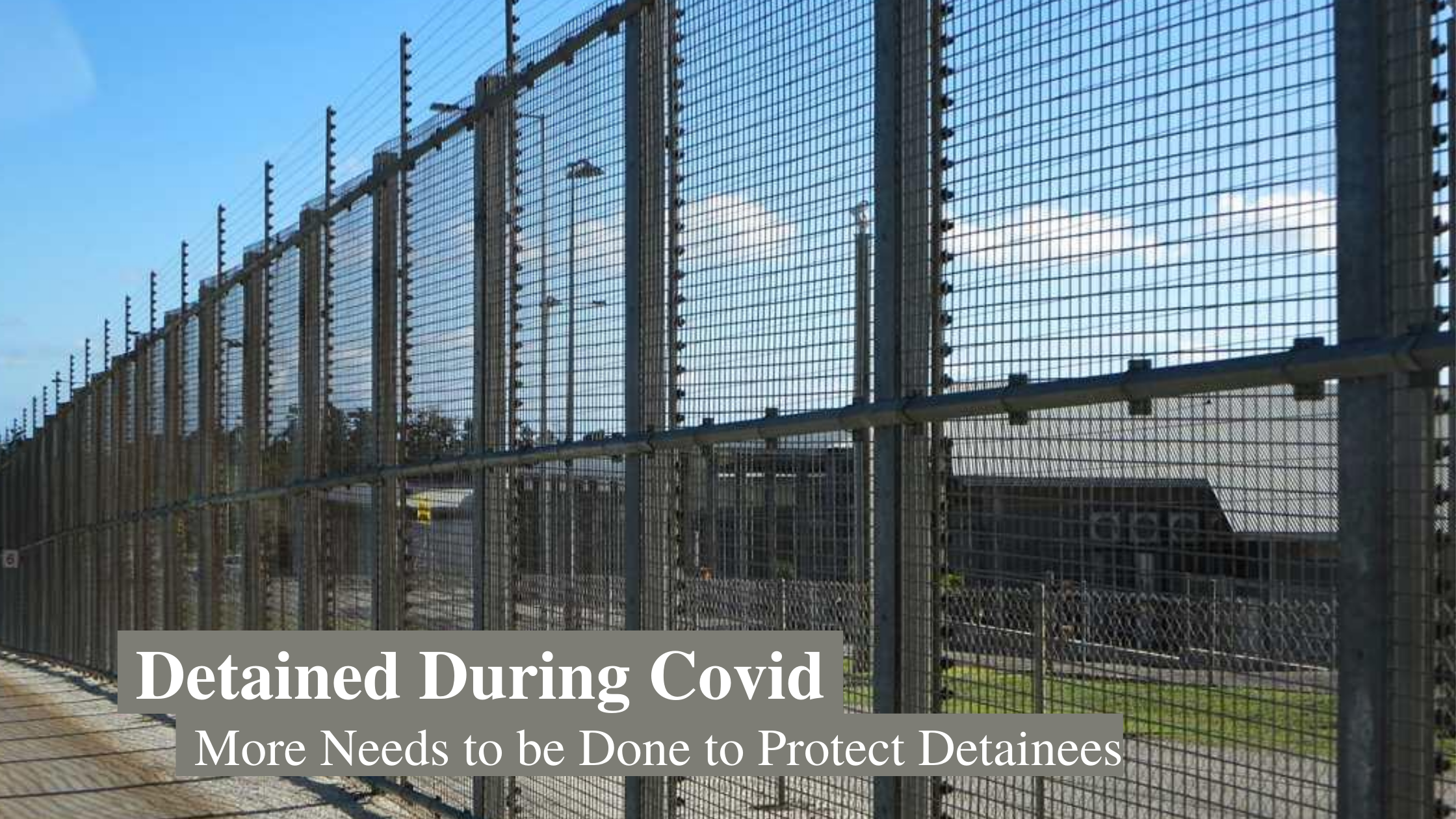
This post was written by summer intern Antonella Portugal. Antonella is a rising senior at Brown University with a double concentration in Political Science and Public Policy.
While much of the country has resumed business as usual, COVID-19 cases keep rising. The conditions in immigration detention centers have been criticized by advocates and government officials alike long before the current public health crisis, and COVID-19 has exposed even further how difficult it is for immigrants to access proper health and safety protections in detention.
One of HIRC’s clients, Peter*, was recently released on bond from the Stewart Detention Center in Georgia, whose dismal conditions have been highlighted by the New York Times. When the facility was evaluated by a correctional medical professional, the expert found that Stewart was still not compliant with guidelines set by the Centers for Disease Control and Prevention (CDC), even after staff had cleaned it. Meanwhile, at other detention centers, immigrant advocacy organizations report that disinfecting measures have exposed people to highly toxic chemicals.
The conditions Peter encountered during his 16–month detention and the efforts of his attorneys and law students to get him released highlight the issues faced by the hundreds of thousands of detainees across the country. At Stewart, Peter slept in the same room as over 60 other people and worked in the kitchen with around 40 other people, with no possible way to social distance and practice the precautionary methods recommended by the CDC. In support of his application for release from detention, he recounted how his fear of contracting the virus was heightened due to his underlying health concerns. He and other detainees even experienced a period without access to soap or hand sanitizer. Meanwhile, people were still being transferred into Stewart to reduce populations in facilities where there were documented cases of COVID-19, which according to this New York Times report, led to dozens of positive tests within a day of arrival at Stewart.
Peter was granted bond and released last week, but it took many efforts to get there. Immigration and Refugee Advocacy Clinic student Katie Quigley JD ’21, who worked on his case this summer under the supervision of Clinical Professor Sabi Ardalan, described “throwing everything [at it] to see what sticks.” Trying to get a client released from detention during COVID-19 meant that a lot of motions were filed but received no response. Prior to filing the bond motion that an immigration judge granted, the team working on Peter’s case (including HIRC students Benjamin Antillon Fernandez JD ’21, Zack Manley JD ’21, and Norah Rast JD ’21) submitted habeas petitions in collaboration with the Southern Poverty Law Center, a humanitarian parole motion, and a Fraihat motion based on his medical concerns—none of which led to his release.
Ultimately, Peter was able to go live with his relative; however, this is not the case for thousands of immigrants who remain in detention facilities across the United States. Conditions that were bad to begin with are worsened by COVID-19. U.S. Immigration and Customs Enforcement’s handling of this public health crisis has led to increased exposure and even death for immigrants currently detained. More pressure needs to be put on ICE to release immigrants from detention, especially during this public health crisis as the country is facing yet another wave of COVID-19 outbreaks.
*Client’s name has been changed to respect client confidentiality.